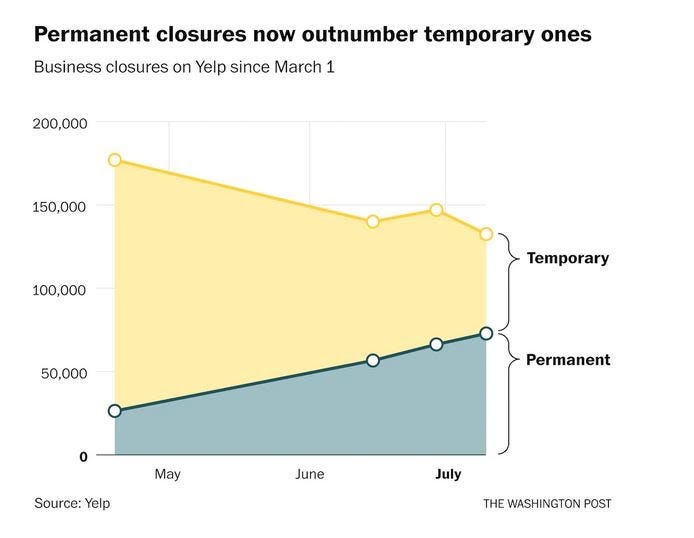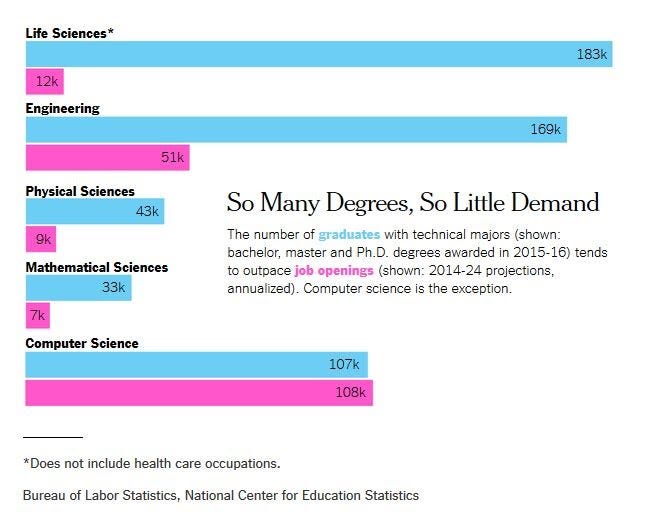Crisis is here, what comes next? (A visual guide)
Data trends are suggesting that the economic crisis is reaching a tipping point here in the United States. If my predictions are accurate and reach the threshold, there is unlikely to be any feasible plan for recovery for a significant number of Americans. Instead, we will likely see sharp increases in poverty, crime, food insecurity, and violence. We’ll explore these statistics to prepare ourselves better to fight against the tide.

11,697,000 people are estimated to face eviction over the next four months, according to an analysis by advisory firm Stout Risius Ross. Four million in August and September. The timer for this housing crisis began on Saturday, August 1st, with the federal eviction moratorium’s expiration. Several reports indicate that landlords are getting ready to start mass evicting their tenants. As the CNBC image demonstrates, there seems to be a higher concentration of risk in states with high urban populations or are relatively poor compared to other states.

Image Credit: ProPublica
Some state governors have gone beyond the federal government mandate, and extended eviction freezes. As we can see from this map, the distribution seems to align with political ideologies. Evictions will primarily hurt the poor, with a weighted distribution towards poor people of color. The result of these evictions will be significant spikes in homelessness throughout our country during a pandemic. It’s not a stretch to estimate that these events will correlate with rising death tolls and infections in the United States.

According to data obtained by the Washington Post from Yelp, permanent closures now outnumber temporary ones. “As of mid-July, 55 percent of the 132,500 pandemic-era closures on Yelp are now permanent.” Many of these businesses are small, consumer-facing companies such as the local escape room business, small restaurants, bowling alleys, and more. While the trends may not look like much at the moment, the correlation in this data indicates we’re on the precipice of a freefall.
This economic hardship will add significant stress to the current eviction crisis. Many of the people barely staying afloat will lose whatever hope they were holding onto. According to the Bureau of Economic Analysis July 30th, 2020 report, the United States gross domestic product dropped 32.9% — the worst performance in recorded history. To put it in greater perspective, peak unemployment during the Great Depression maxed out at 24.9% in 1933.

Now I don’t believe that GDP is an accurate indicator of the health of a nation. Still, the United States’ corporate-controlled Congress and media often tout it as a measurement of well being. The report tells us that there can be no instant recovery; the gap is now too deep. Whenever recovery does begin, it will be slow and tedious.
This information is essential to understand because it gives us insight into the challenges ahead. With economic activity stifled to this degree, the increasing homeless population (or those with their heads just barely above water) will not have easy entry into new employment. Even if we could snap our fingers today and cure COVID-19, the recovery will be long and slow. Before the pandemic, 69% of American families surveyed reported less than $1,000 in their savings account. It’s no understatement to say that the decisions made by our federal and state government leaders will be devastating to the lives of millions of Americans.

This economic crisis exacerbates an existing stagnation problem in the United States. In 2017 the New York Times did a comparison reviewing graduates with technical majors (bachelor, master, and Ph.D.) and the employment opportunities available within those verticals. As the graph above indicates, except for computer science, there is a significant disparity between qualified workers and the labor available. This compounds the economic crisis caused by the pandemic. Many of these young individuals will now have mounds of debt that are inescapable. Student debt in the United States is one of the few types of debt immune to dissolution through bankruptcy.
At this moment, student loans are a cruel and crippling policy that targets both class and generation. A political arrangement that employs people to support the suppression of another. To have education be contingent on wealth increasingly divides the haves and have nots. It is antithetical to the American ideals often parroted but highly aligned with American actions over the past fifty years. Our systems stress and oppress the majority with artificial barriers to entry, so those at the top of economic power and prestige can maintain their status. The result is the active hindering of the potential of so many to preserve antiquated social orders. With the crisis already in motion, these arrangements will only serve to bind generations to a life of poverty further.

Not everyone will suffer. Are we noticing a trend? The burdens of poverty are spread disproportionately among generational lines. The Baby Boomers have organized society in such a way that the wealth is perpetually transferred upwards to those to have while denying opportunities to younger participants within the system. This is true at the local municipal level through affordable housing prevention, up to the federal level, where most of our lawmakers are Baby Boomers.
The pandemic brings the opportunity to solidify wealth concentration in the United States to degrees previously out of reach. As the poor and middle-class struggle to realign their efforts and understandings in this new world, the existing wealthy will only further concentrate their holdings and ride out the storm. The Baby Boomers and their now-adult children will use the opportunity of the crash to buy up depressed assets for fractions of their present costs. We are now witnessing the most substantial contribution to expanding class divisions the United States has ever experienced. The result of which will reverberate for decades.
What’s Next?
There are several potential possibilities we can explore using the present as a point of departure. One key takeaway is the understanding that happenings like the crisis we are experiencing are not isolated events. They create ripples in time that will continue to impact people well into the future.
If we rely on electoral politics to solve our present problems, I fear that there is no hope for redirection. Joe Biden and Donald Trump both serve the same masters to varying degrees. A Joe Biden victory will diminish some of the overt racism and authoritarianism at the federal level but do little to stop it as an ideology. He will do nothing to address the systemic oppression baked into our laws and institutions because blind justice requires a reimagining of what wealth is and how we distribute it. As we learned on June 18th, 2019, he told his wealthy donors that “nothing would fundamentally change” if he is elected.
The patriots in our streets right now continue to be the best course of action for demanding change, but Congress shows nothing but contempt for their demands. Those with power and wealth have no issue spreading violence and terror, as we see with the mass police riots and brutality throughout the United States. Last week they took a recess without moving forward with an extended support plan for Americans, many of whom are on the brink of fiscal destruction. At this point, elected leadership is acting in bad faith, attempting to sneak military funding into relief bills. The question remains, how long can this multicourse of action last?
Some moments give me hope. Recently protestors have begun to demonstrate outside of the homes of elected officials. I temper that hope with reality, knowing that the significant majority of humanity abhors violence — creating no mortal fear for those in power. They wield their organizations of terror, and we persist through the abuse. How long will increasingly desperate people allow wealthy elites to concentrate power while ignoring the majority? If history is any indicator, not very.
Here we see an inherent conflict with a transcendent pathway forward. If we replace a systemically violent organization and people with violence, do we not become the same in the process? A peaceful transition of power can and should be the ultimate result of critical mass protesting, but at what cost?
Every indicator suggests that no point before November 4th will be better than this one. No matter which possibility manifests, we are unlikely to see the degree of action necessary for our circumstances. The Trump administration has dismantled our federal government, the best technology we have to deal with the national and global crisis. There is a pandemic raging, and misinformation campaigns have deeply diluted people. The national debt ballooned in wealth transfers to the rich. Automation ensures that the means of production are accessible only to a privileged few, and our alternative to Trump is a man with no will to change the corporate order. What exactly are we winning back?
With all this talk of our economic disaster, it’s easy to forget about the ever closer environmental crisis that continues to fuel mass extinction events worldwide. A ripple effect of COVID-19 has been dramatic CO2 emissions reduction, the lowest in the past fourteen years. If we reignite the machine, we only return to a death march. One that we know will disproportionately impact those without moderate wealth.
Social collapse is not new to human history, and if this path is unavoidable for us, we had best learn from it. This moment is made possible by the actions of both internal and foreign forces, and much of our population is ill-prepared for what may come next. The corporation strikes a mighty blow against the United States with these event chains. We don’t know where this wave goes, but it’s easy to imagine what could go wrong — and who would benefit.
We explore these data sets and possibilities not intending to spread nihilism, but rather to understand our point of departure. Collective change is the product of individual action. The better each of us understands the reality of where we are and the potential of where we’re going, the more prepared we can be to shift direction. Ultimately, I have a high degree of optimism for the future. Struggles are part of our universe, and there will be much need for helpers.